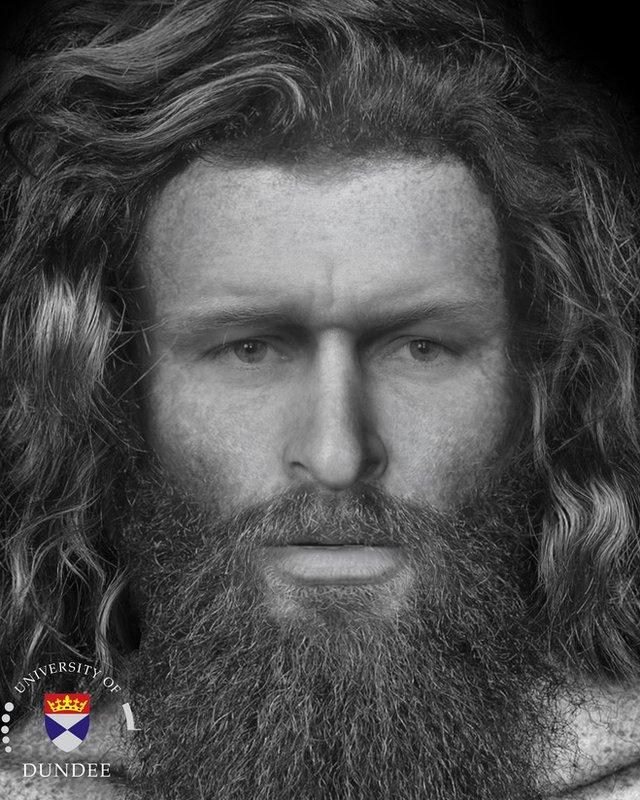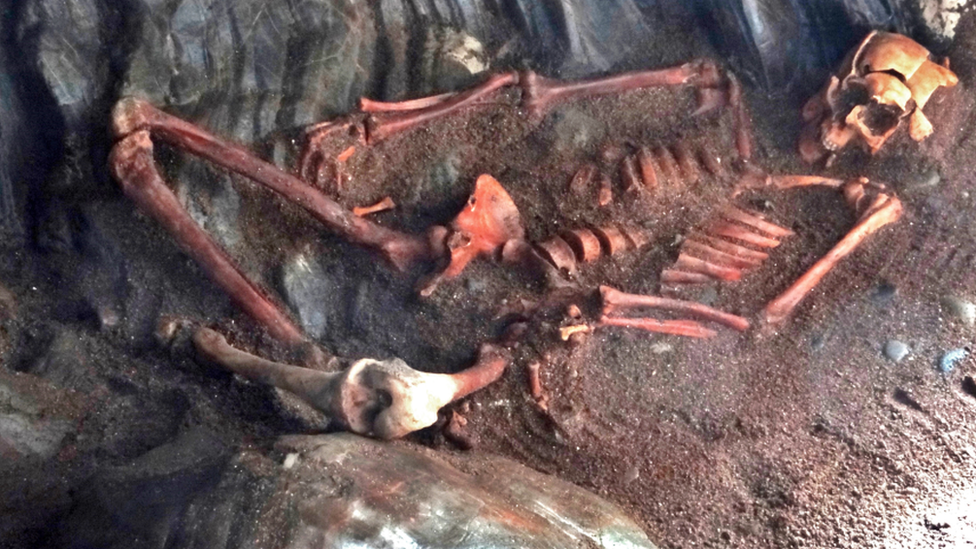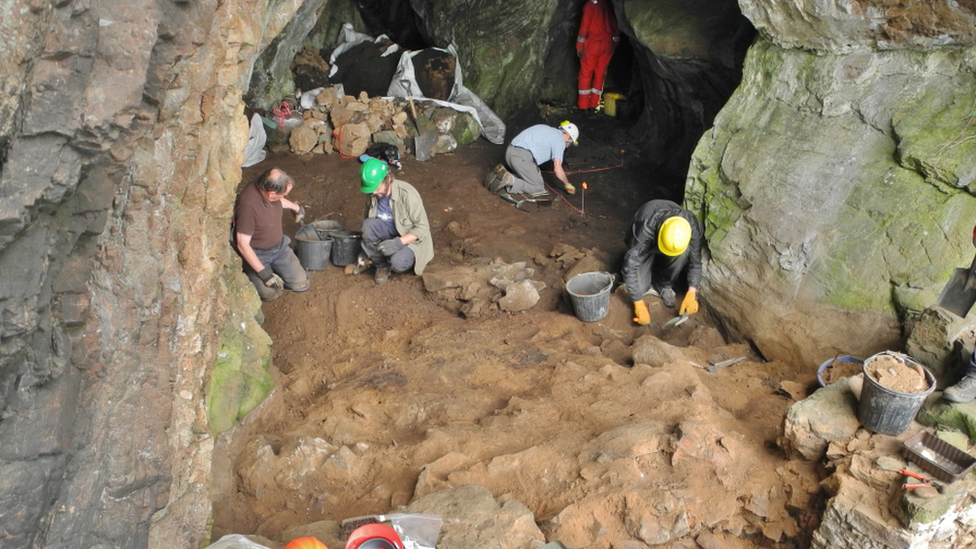Facial reconstruction made of 'brutally-killed' Pictish man
- Published

The Pictish man sustained at least five severe injuries to his head
The face of a Pictish man who was "brutally killed" 1,400 years ago has been reconstructed by Dundee University researchers.
Archaeologists found the man's skeleton buried in a recess of a cave in the Black Isle, Ross-shire.
Forensic anthropologist Dame Sue Black and her team at the Centre for Anatomy and Human Identification (CAHID) have now detailed the man's injuries.
He was found in a cross-legged position with stones holding down his limbs.

The skeleton was discovered during a cave excavation in the Black Isle
Prof Black said the "fascinating" skeleton was in a remarkable state of preservation.
She said: "From studying his remains, we learned a little about his short life but much more about his violent death.
"As you can see from the facial reconstruction, he was a striking young man, but he met a very brutal end, suffering a minimum of five severe injuries to his head."
The CAHID team includes Dr Christopher Rynn and PhD students Micol Zuppello, Viviane Lira and Samantha Goodchild.
Prof Black said the first three impacts broke the man's teeth, and fractured his left jaw and the back of his head.
She said: "The fourth impact was intended to end his life as probably the same weapon was driven through his skull from one side and out the other as he lay on the ground."
The fifth blow was to the top of the man's skull.

The Rosemarkie Caves Project has been excavating caves along the coast of the Black Isle
Archaeologists from the Rosemarkie Caves Project, external made the discovery while digging to determine if the cave might have been occupied.
Excavation leader Steven Birch said: "Here we have a man who has been brutally killed, but who has been laid to rest in the cave with some consideration - placed on his back, within a dark alcove, and weighed down by beach stones.
"While we don't know why the man was killed, the placement of his remains gives us insight into the culture of those who buried him.
"Perhaps his murder was the result of interpersonal conflict, or was there a sacrificial element relating to his death?"
Unexpected discovery
The Rosemarkie Caves Project has been locating and surveying the series of caves along the coast of the Black Isle.
Excavations provided evidence that the caves were being occupied or used in some way from 1,500-2,000 years ago until the recent past.
The project's founder Simon Gunn said: "When I first started looking into these caves, I never dreamt we would find anything like this - it was so unexpected.
"I remember all the excitement when the remains of Richard III were found under a car park.
"Rosemarkie Man died 900 years before that, so you cannot imagine our reaction when we first uncovered these human remains and then learned about his brutal death".